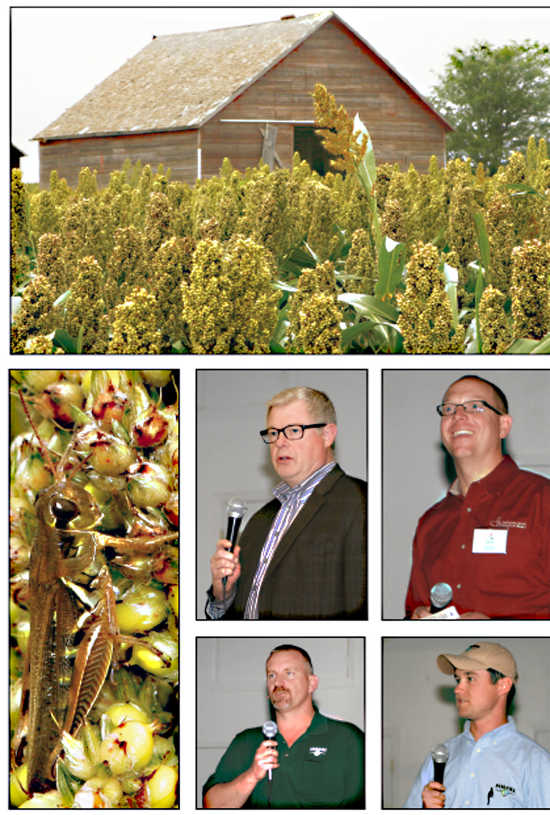Sorghum finds favor in changing conditions

McCOOK, Nebraska -- Trenton Agri-Products, the ethanol producing plant east of Trenton, Nebraska, wants milo this fall.
"Milo in significant quantities," TAP President Charlie Wilson told grain producers gathered at the Nebraska Grain Sorghum Producers' "Sorghum Profitability" seminar in McCook Tuesday. Wilson said that, as the Trenton plant was under construction in 2003, he -- coming from Kansas -- was surprised there wasn't more milo grown in the area. "The economy looked favorable for milo," he said.
"I asked people, 'Why not more milo?'," Wilson said, and continued, with a grin. "And (Tom Baker) told me, 'This is the Cornhusker state, and milo is a ditch weed."
That being what it was 10 years ago, Trenton Agri Products will accept milo this fall. "We can take a significant quantity of milo at our plant this fall," Wilson said.
To make adjustments in ethanol production procedures to utilize milo as well as corn, Wilson explained, "We need to use it (milo) in significant quantities. We won't spend more for milo unless we get significant quantities."
If the plant accepted 100 percent milo, it would require 300,000 acres, Wilson said. "Eight- to 10-million bushels -- that would be fantastic."
Wilson said the plant produces distillers grains as a by-product. "Cattle are color-blind," he said, "but we prefer white milo."
Wilson sees milo as a perfect fit for area grain growers, "with concerns about drought and irrigation ... with little and inconsistent moisture."
Wilson said, "We are in the market for your milo."
For more information, contact TAP at (308) 334-5100.
T.J. Walker and Adam Kester, the Nebraska Game and Parks, explained that grain producers can get supplemental funds from their crops if they enroll in "Focus on Pheasants" (FOP) and cropland management programs.
By participation in FOP, private land-owners receive incentive payments to utilize practices that enhance pheasant habitat and pheasant populations.
Walker said that while there are more pheasants in Southwest Nebraska because of wheat and milo crops, "the drought doesn't help pheasant numbers."
Walker explained "stubble" incentives:
* Incentive payments for leaving taller wheat and milo stubble (at least 14 inches tall on average) -- up to $15 per acre, not to exceed 320 acres.
* Incentive payments for not spraying weeds in wheat stubble post-harvest (regardless of stubble height) -- up to $15 acre not to exceed 320 acres.
There are also incentive payments to allow access for hunting, ranging from $8/acre for "good to excellent" CRP, CCRP or CREP to $1/acre for "moderate" other habitats.
Kester said sign-up is not a complicated process, but that it has to be approved BEFORE harvest. "One signature and we're under way," he said. "And we have to verify the height (of the stubble)."
Kester said that one producer signed up 80 acres of milo stubble and "got an extra 12-hundred-dollars off that crop." Another signed up 320 acres of wheat stubble and, between the stubble incentive and an allowance for hunting, received a $5,760 payment.
These incentive programs are paid for with Pittman-Robertson Wildlife Restoration Act funding, signed into law by President Franklin D. Roosevelt on Sept. 2, 1937, and creating a 10 percent excise tax on sporting arms and ammunition. A few years later the tax became 11 percent. The tens of millions of dollars generated by Pittman-Robertson each year were mandated to go back into state and local organizations to increase game populations, expand habitat and train hunters.
Walker said that "the program has been getting extra Pittman-Robertson funds recently," as Americans are purchasing guns in greater number in response to the possibility of gun controls.
He also said G&P has applied for a Nebraska Environmental Trust Fund grant that may also expand stubble incentive programs.
For more information, contact Walker or Kester at (308) 535-8025.
